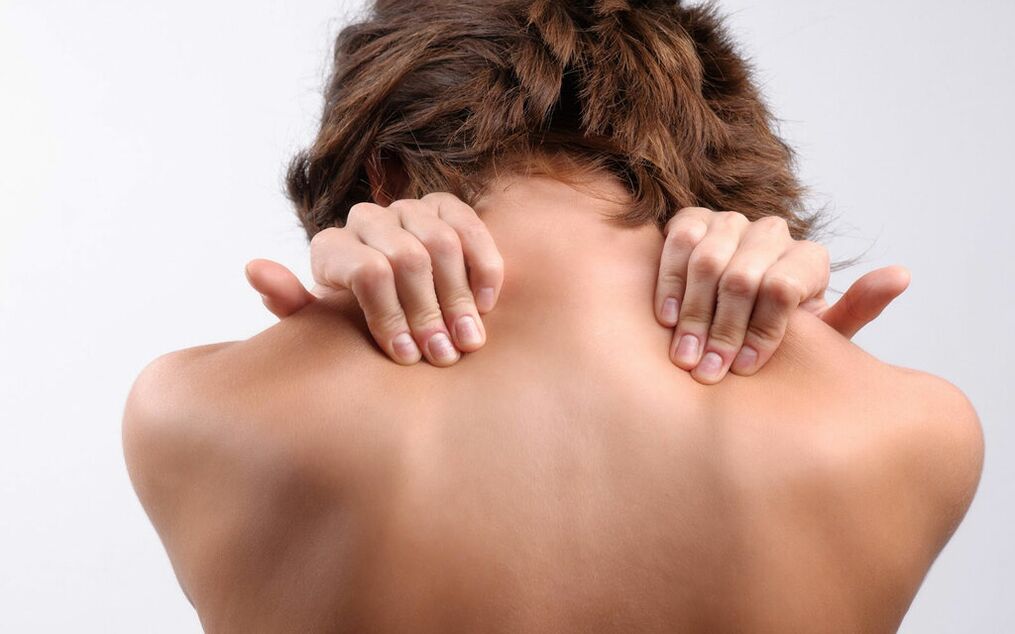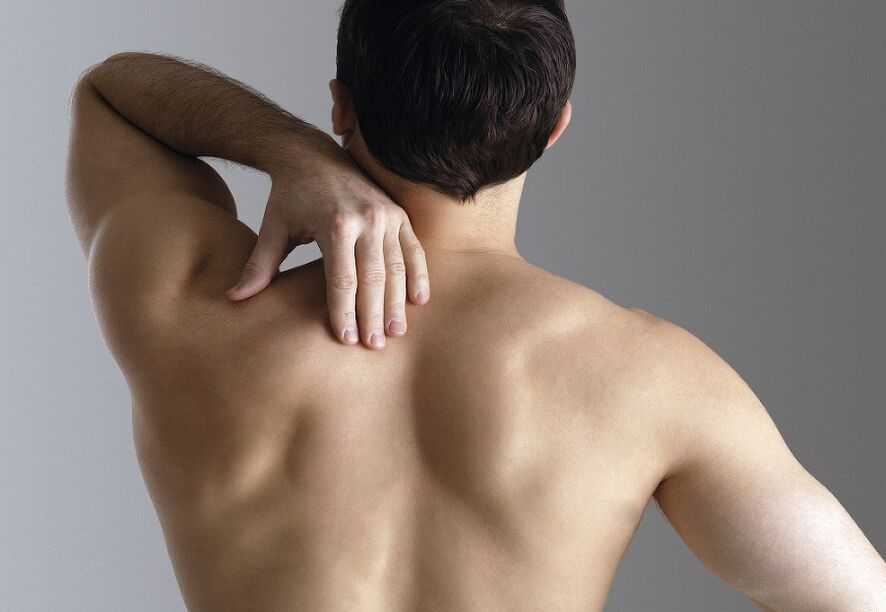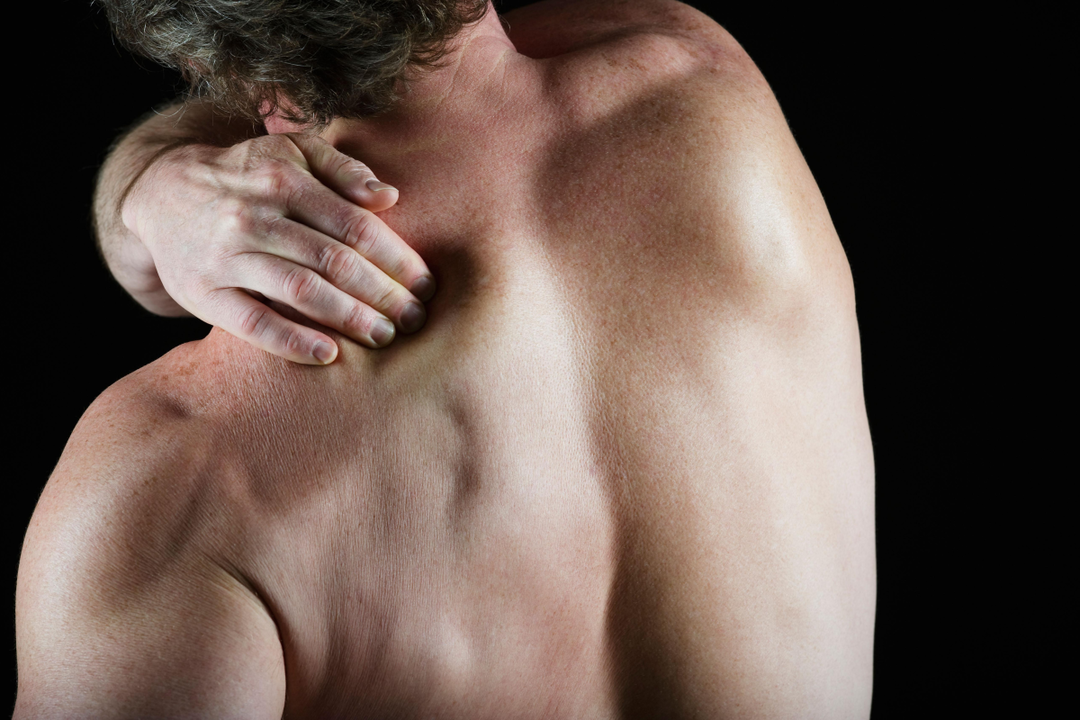
Pain under the left shoulder blade is a common occurrence that can occur after a sudden movement or due to an awkward body position. They tend to pass quickly and no longer bother you.
Constant discomfort under the scapula can be a symptom of a serious illness that requires immediate treatment. Especially do not underestimate this symptom if the pain radiates from the left to the breastbone or the left arm becomes numb.
From whether a person went to a specialist for help in time, from his nature and location, an accurate diagnosis can be made, the direction of the examinations can be chosen, and the necessary treatment can be selected to eliminate not only the disease in yes, but also the causes of its appearance.
Causes of pain under the left shoulder blade.
What does that mean? There are a sufficient number of reasons for pain under the left scapula in adults; they can be associated with both scapula problems and diseases of the internal organs. Let's consider the most likely causes of this condition below.
Certain diseases of the musculoskeletal system can be accompanied by a painful symptom in the area of the left shoulder blade. Most of the time it manifests like this:
- Osteochondrosis of the thoracic or cervical spine.
- Intercostal neuralgia
- Traumatic injury to the scapula (suprascapular nerve compression injury).
- Rib fracture.
- Sprengel's disease (scapula alata): pterygoid scapula.
- Myofascial syndrome.
Cardiological diseases. This is not to say that it only hurts in the area of the left shoulder blade. The pain then passes to the left hand, then to the clavicle, and then down to the lower abdomen. Depending on the ailment, patients experience a sensation of shortness of breath, a feeling of cardiac arrest, or a constriction of the throat. At this time, the chest appears constricted or pressed by a sensation of heat. These are such diseases:
- Ischemic heart disease.
- Myocardial infarction.
- Pericarditis
- Angina pectoris (unstable, stable).
- Mitral valve prolapse.
- Less commonly, aortic aneurysm.
Constant pain under the left shoulder blade can indicate diseases of the bronchopulmonary system. At the same time, painful sensations are always directed to the affected lung, have a medium intensity and a painful character, located under the left shoulder blade at a point of pain. This could be:
- Left side pneumonia.
- Pleurisy (dry, on the left side).
- Tracheobronchitis with autonomic dysfunction.
- Acute bronchitis.
- Left lung abscess.
Gastrointestinal tract diseases:
- YABZH (Ulcus gastrica) - gastric ulcer.
- Ulcus duodeni - duodenal ulcer.
- Esophageal spasm
- GERD is a gasoesophageal reflux disease.
- Rarely: exacerbation of pancreatitis.
The typical causes of pain under the left shoulder blade in prevalence are the following:
- Cervical osteochondrosis, most often manifested as unilateral pain in the lower part of the occipital os, the occipital bone. The pain is painful in nature, intensifying with active head movements and constantly radiating under the scapula, into the arm.
- Another disease, the typical symptom of which is pain under the left shoulder blade, is intercostal neuralgia. It is a frequent consequence of osteochondrosis and is manifested by low back pain and intense girdle-like pain that radiates to the right or left, even under the scapula.
- YABZH (gastric ulcer). The symptom is most often due to seasonality, depends on the nutritional factor, and is characterized by paroxysmal and radiating pain.
Based on such a brief anatomical description, all causes of pain under the left shoulder blade can be divided into two large groups:
- Pain associated with the pathology of internal organs (cardiovascular pathology, respiratory diseases, diseases of the gastrointestinal tract and spleen).
- Pain associated with pathology of the musculoskeletal system and muscle pain, even of a neurogenic nature.
To find out why it hurts under the left shoulder blade, you need to undergo a comprehensive examination, which, based on specific complaints and examination data, will be prescribed by the attending physician. After all, the pain in different diseases will differ in nature, intensity and provoking factors.
Angina pectoris
Another heart disease can manifest itself as a sharp pain under the left shoulder blade - this is angina. With it, the pain occurs mainly in the retrosternal region, then, as if "spilled" to the left side. By the nature of the manifestation, they are sharp and constricted, disappear at rest and after taking nitroglycerin. To a lesser extent, validol helps patients.
In most cases, the disease is caused by atherosclerosis of the coronary arteries. Angina attacks most often occur during physical and emotional stress, after sudden hypothermia or overheating of the body, the intake of alcohol and heavy, spicy foods.
Osteochondrosis
The most common cause of pain under the left scapula behind the back is osteochondrosis of the cervical spine, which is characterized by compression of the spinal nerve roots.
This condition is characterized by a dull, drawing pain, often unilateral just below the occipital region. It can be permanent and manifest as lumbago, which always radiates below the scapula on the affected side. There is a strong increase in the symptom with head movements, after a night's sleep.
It is often the result of prolonged stress on the neck. Also, patients note numbness in the hands, migraines, dizziness.

Pneumonia and pleurisy
With left-sided pneumonia (pneumonia), moderate pain, accompanied by coughing up sputum and wheezing in the lungs, will also bother in the area of the scapula. At the same time, temperature "candles" are often noted.
Pleurisy (inflammation of the pleura) can be dry or purulent. Both types of this pathology are accompanied by severe pain when breathing, while the person protects the affected side - breathing becomes shallower.
With purulent pleurisy, a puncture is required, followed by an analysis of the discharge and drainage of the pleural cavity.
Stomach ulcer
A stomach ulcer is a common disease that causes increasing pain under the left shoulder blade. The sensations gradually spread to the entire chest, nausea and vomiting appear. Severe pain in the back is observed after eating junk food - too salty, spicy and oily. He also noted:
- pale skin
- been nervous scared.
- cold sweat.
- blood clots in vomit (the main sign of the urgent need to call a doctor at home).
A person cannot move normally when painful sensations arise. The stabbing pain increases with any perfect movement. A sharp pain can be a sign that an exacerbation has occurred and you should call an ambulance.
Intercostal neuralgia
This pathology often occurs in patients with complaints of pain under the left shoulder blade. In this case, the pain spreads to an intercostal space, is accompanied by a sensation of numbness or tingling along the affected area, increases when leaning to the diseased side, that is, to the left. In some cases, along the inflamed intercostal nerve, skin rashes or redness may occur.

Trauma
Most often, pain caused by traumatic shoulder blade injuries occurs with a direct impact on the shoulder blades or by landing on the back. The pain syndrome is intense, especially during the first hours after the injury.
In the future, it appears or intensifies with movement, edema and swelling develop. Trauma pain can also be caused by a fracture of the scapula or ribs. Therefore, an X-ray is essential.
Myocardial infarction
A heart attack is characterized by sharp, sharp pain under the left shoulder blade, which can also appear on the entire left side of the body (in the left hand, left side of the neck).
The cause of an acute angina attack in a heart attack can be the most common emotional stress, so people with heart problems are advised not to be nervous.
Pain in a heart attack can be of a different nature: cutting, squeezing or pressing. But there are also atypical cases in which pain can manifest itself in the most unexpected place and in the most atypical way, for example, in the peritoneal region.
Pericarditis
The disease is associated with inflammation of the serous membrane of the heart. With this disease, tachycardia often develops, hence the cause of pain on the left side of the back. The pain is sharp, but goes away when the person is calm or when he leans forward.
This ailment is dangerous because adhesions can form and the organs contract along with the contraction of the heart. Also, calcium salts can deposit on the pericardium of the heart, leading to a thickening of the lining of the heart.
Psychosomatic illnesses
Often the pain under the left shoulder blade is observed with psychological stress and diseases of a psychosomatic nature. The reasons lie in stress and emotional turmoil, which the body cannot cope with on its own and signals problems with the help of psychosomatic pain.
In addition to painful sensations in the back of the scapula, with psychosomatics, the following accompanying symptoms may occur:
- heat;
- discomfort in the chest area;
- throat cramps;
- Shortness of breath.
Diagnosis
To understand how to treat pain under the left shoulder blade in the back from the back, you need to undergo a comprehensive examination to establish the exact cause of this symptom.
First of all, these are:
- Collecting anamnesis. It is quite brief, since pain under the left shoulder blade in the back is not considered a life-threatening condition.
- Knowledge of the doctor with a detailed description of the nature of the pain.
- Examination of the patient's back.
- Instrumental examination is carried out only in case of suspected acute infection, oncology, trauma, and with severe neurological symptoms.
First of all, the doctor makes a full diagnosis to exclude myocardial infarction, spinal oncology, neurological disorders that require urgent treatment. And only after that, he decides how to treat this patient.

What doctor should I see?
Depending on how the pain sensations arise, what their characteristics are and what they are associated with, you should choose a specialist to whom you will go for a consultation:
- Gastroenterologist - for pain associated with meals, the presence of dyspepsia.
- Therapist or pulmonologist - for pain, aggravated by breathing, accompanied by shortness of breath, cough, fever.
- Neurologist: for pain associated with movement, stress.
- Traumatologist: when it indicates an injury that precedes the onset of pain.
- Cardiologist - with a burning sensation behind the sternum with irradiation under the scapula, on the tongue, left arm.
- Psychologist and psychiatrist - for pain, the causes of which were not found based on the results of a detailed examination, especially if there are other signs of psychosomatic disorders and neuroses.
Illness and pain are much easier and safer to prevent than to cure. Even if there are no health problems or discomfort, you should visit a doctor regularly and undergo a medical examination. If pains still appear, you cannot self-medicate, you should immediately contact a specialist in this area. By eliminating pain with painkillers and without taking complex treatment, you contribute to the development of serious diseases of the heart, gastrointestinal tract or spine.





































